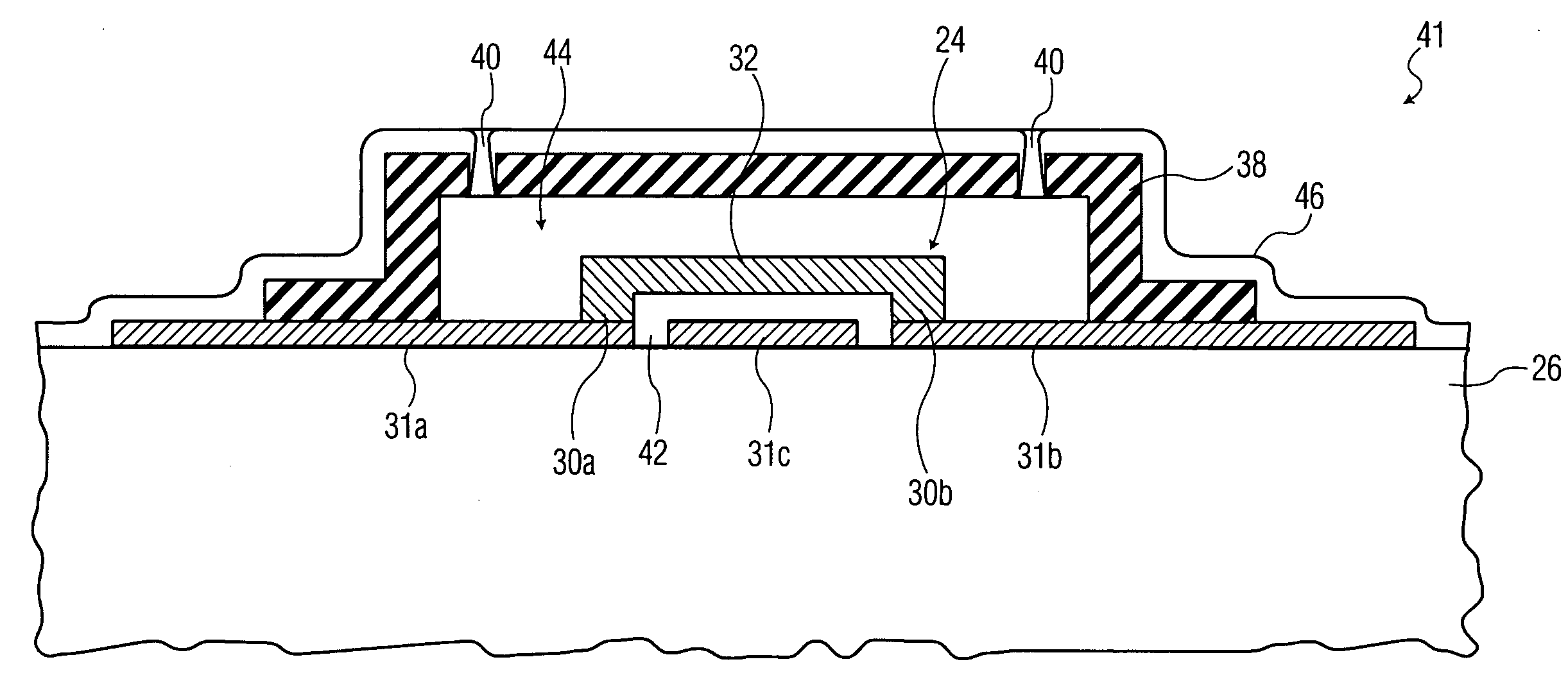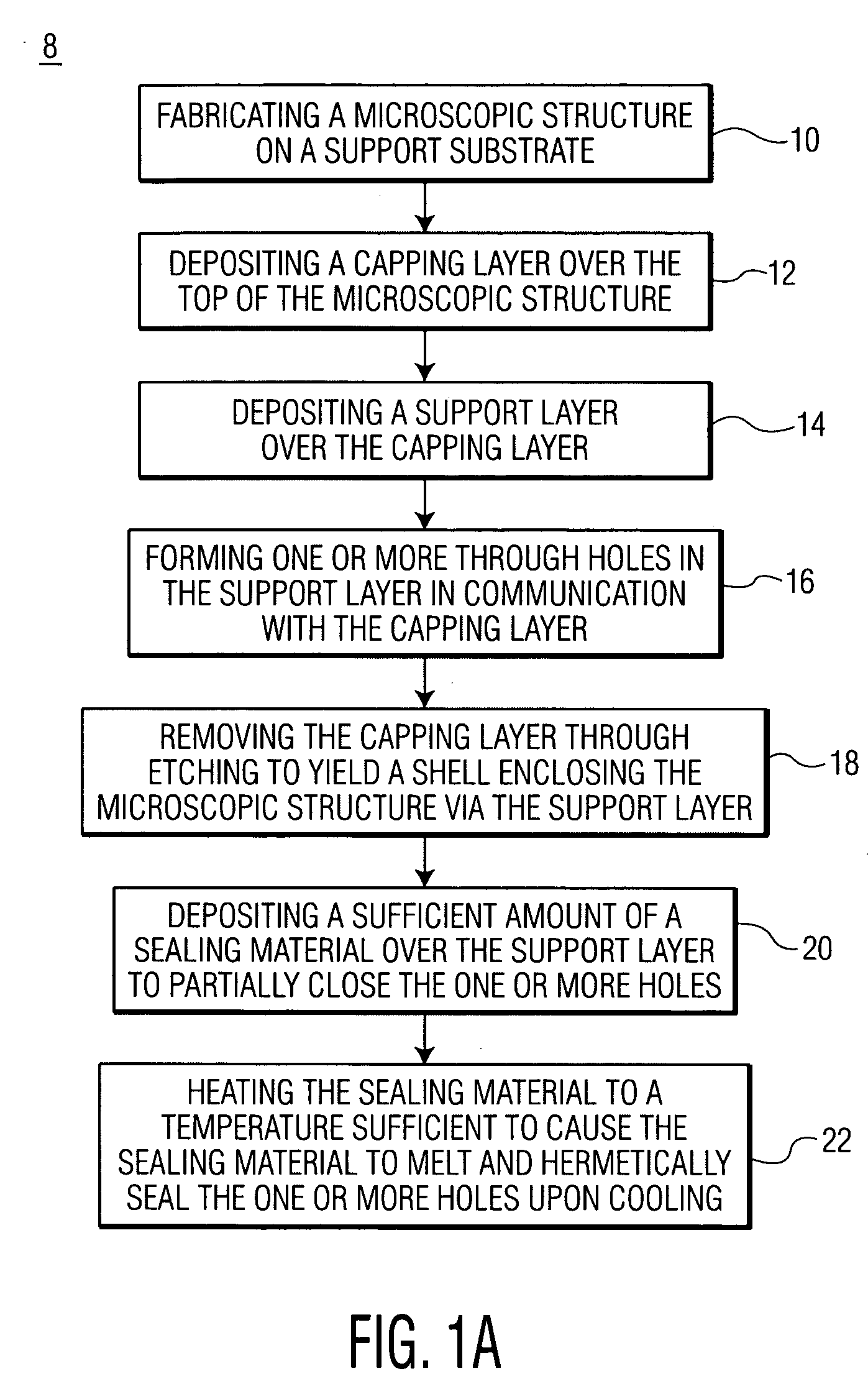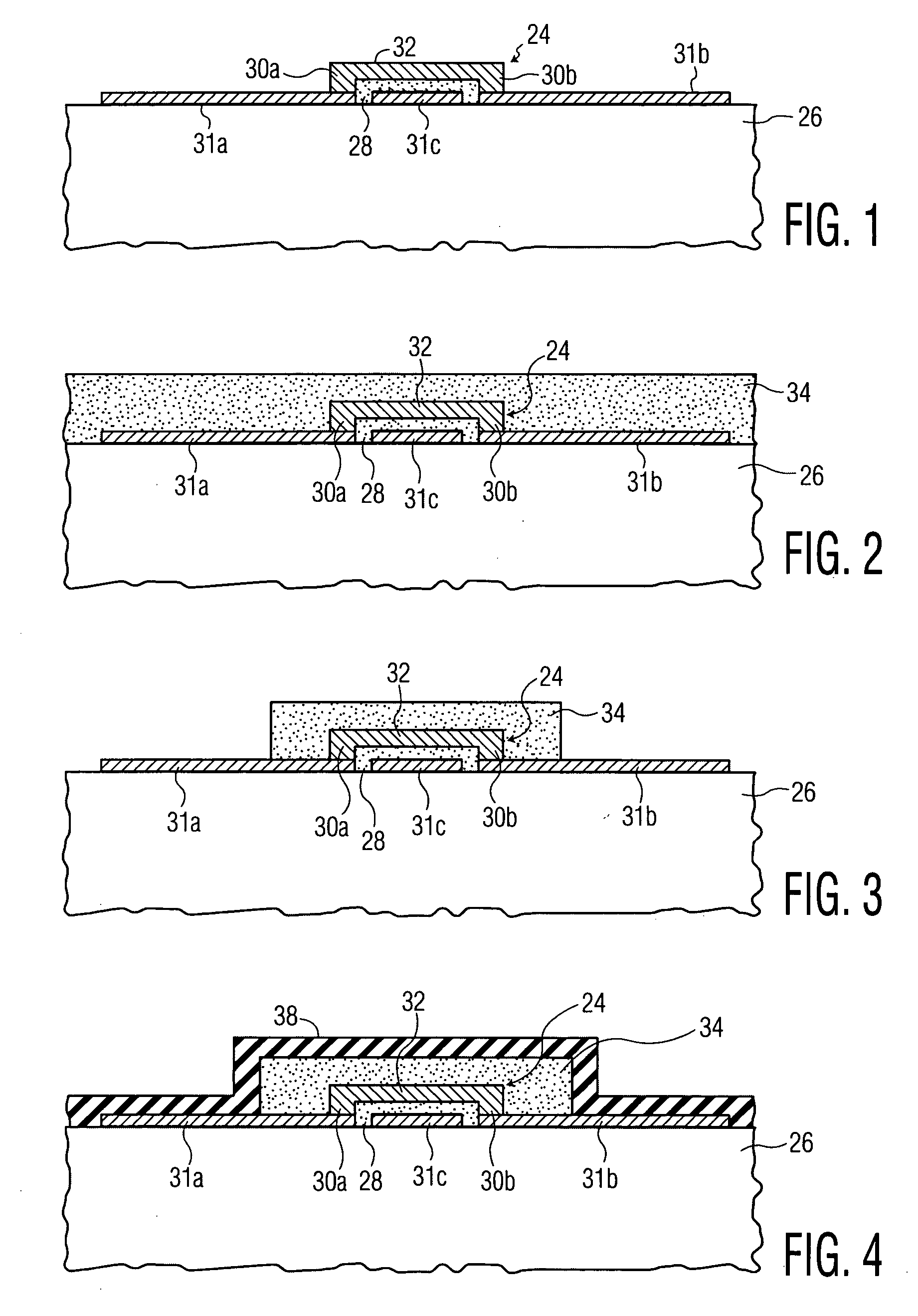Processes for hermetically packaging wafer level microscopic structures
a technology of microscopic structure and process, which is applied in the direction of microstructural system, semiconductor device details, semiconductor/solid-state device devices, etc., can solve the problems of bulky hermetically sealed packaging of mems devices, adverse effects on components forming part of mems devices, and high cost of fabrication
- Summary
- Abstract
- Description
- Claims
- Application Information
AI Technical Summary
Benefits of technology
Problems solved by technology
Method used
Image
Examples
example
Reflow Sealing of Vias Formed in a Silicon Nitride Support Layer
[0073] A thick support layer (1 micron thick) composed of silicon nitride is prepared though sputtering over a microscopic structure. Multiple vias each having a diameter of about 1 micron are etched into the support layer. A copper layer (1 micron thick) is deposited onto the surface of the thick support layer using sputter deposition. An Excimer laser having a wavelength of about 308 nm and a per pulse energy of about 500 mJ focused on a 5 mm by 5 mm spot size is used. The laser is passed through a homogenizer. The laser scans over the copper layer at a rate of about one laser pulse per spot.
PUM
 Login to View More
Login to View More Abstract
Description
Claims
Application Information
 Login to View More
Login to View More - R&D
- Intellectual Property
- Life Sciences
- Materials
- Tech Scout
- Unparalleled Data Quality
- Higher Quality Content
- 60% Fewer Hallucinations
Browse by: Latest US Patents, China's latest patents, Technical Efficacy Thesaurus, Application Domain, Technology Topic, Popular Technical Reports.
© 2025 PatSnap. All rights reserved.Legal|Privacy policy|Modern Slavery Act Transparency Statement|Sitemap|About US| Contact US: help@patsnap.com



